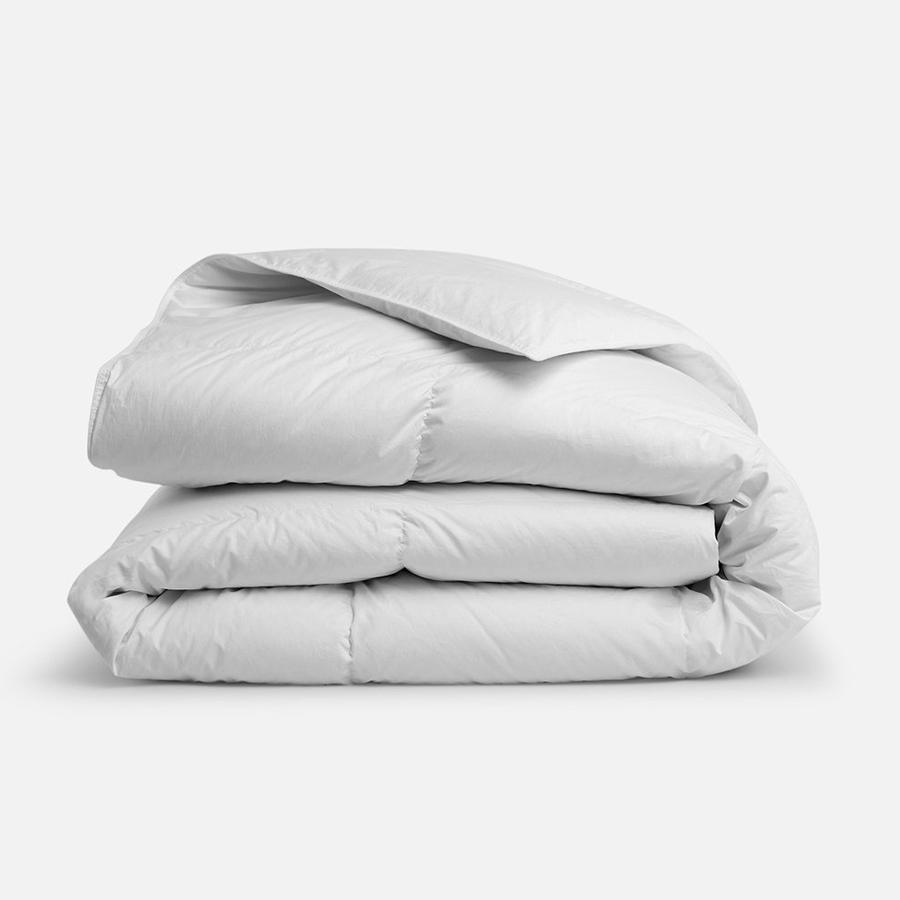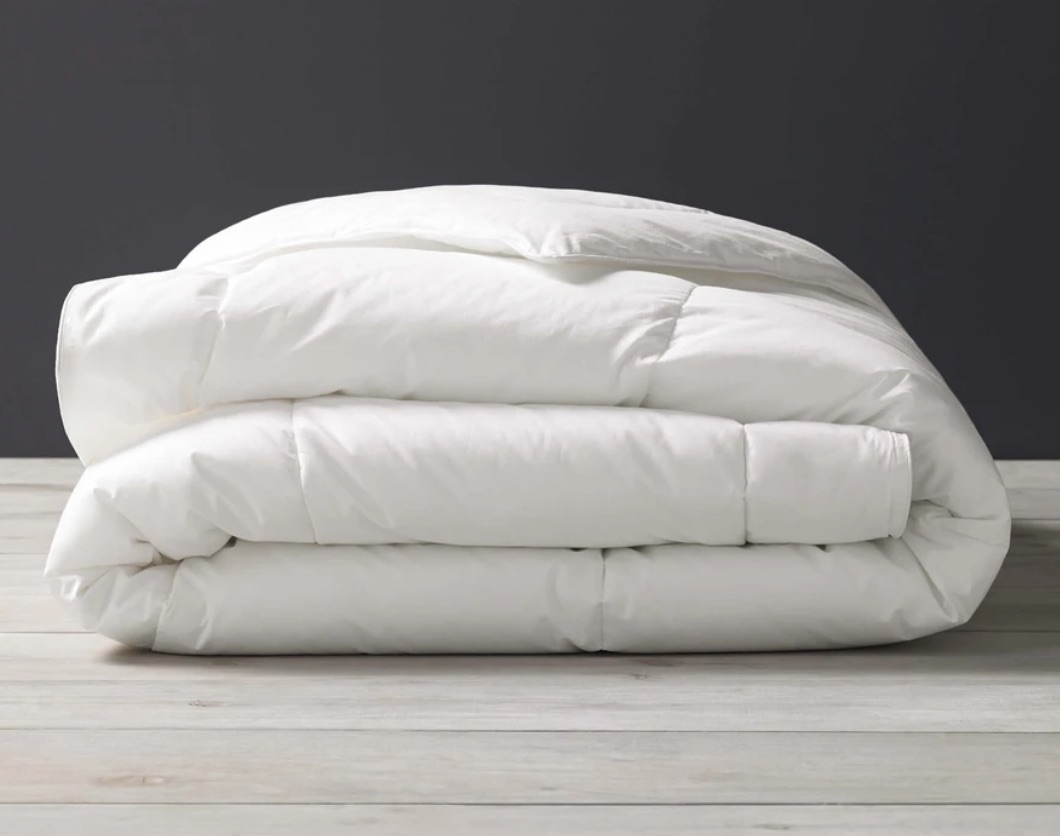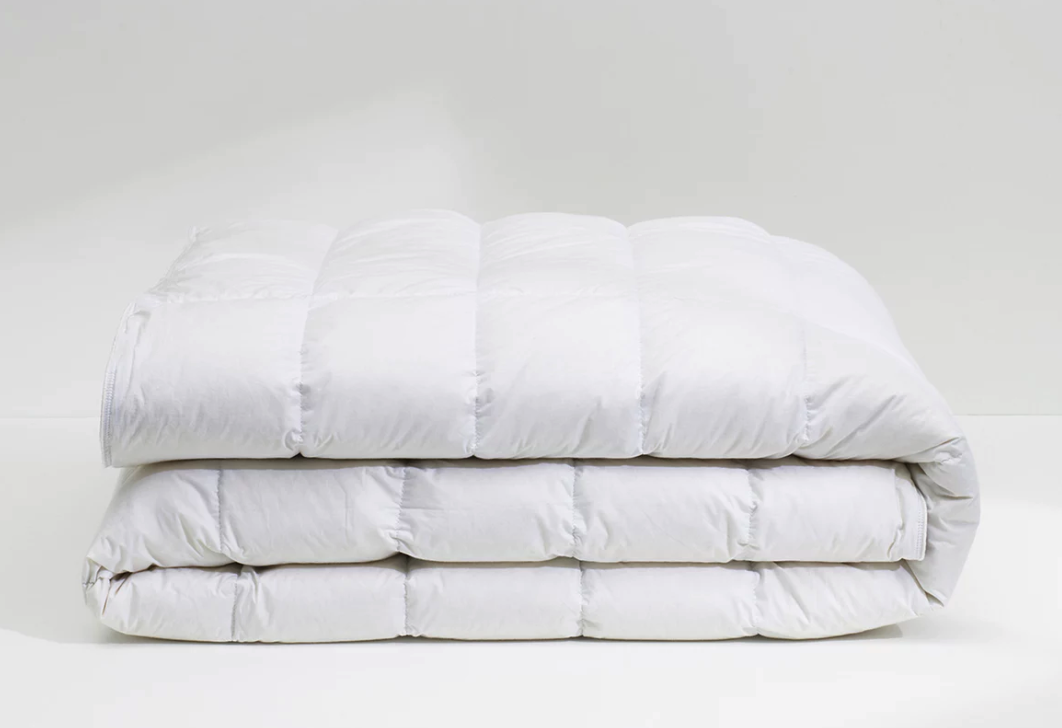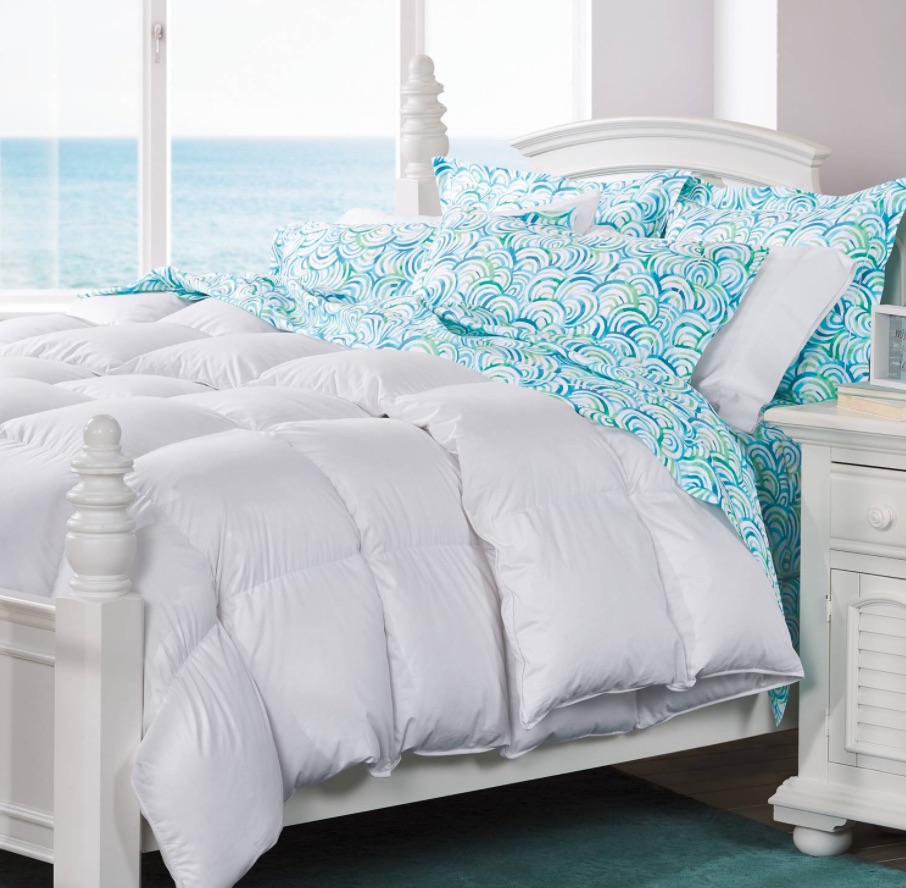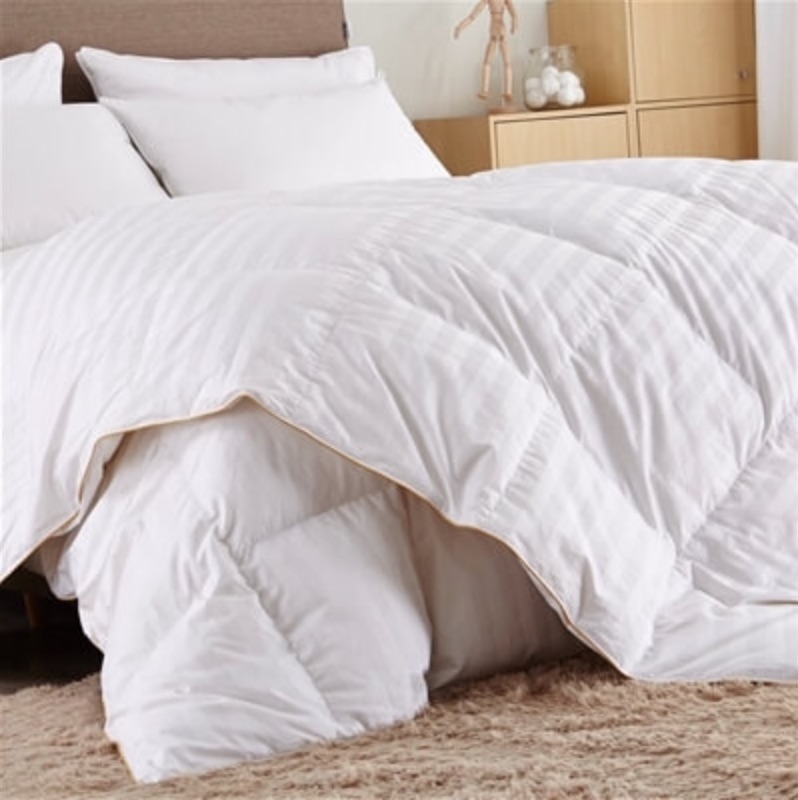Buying Guide – How to Shop for a Down Comforter
Considering how often we use comforters, it can come as a surprise when purchasing one seems to require a whole new vocabulary. In our guide to buying a down comforter, we’ll walk you through all the crucial details. By the end, you should understand the subject better and feel confident choosing the right comforter for you.
Fill Material
Goose Down vs Duck Down
Down can be derived from either ducks or geese. Goose down tends to be somewhat warmer than duck down and may be more expensive. This is because geese are larger than ducks and thus tend have bigger, fluffier down that offers more loft.
However, not all goose down is from large, mature geese, so the down fill is not inherently larger in goose down than duck down. In addition, down clusters offer more warmth, so a duck down comforter with a high percentage of clusters may be as warm or warmer than a goose down comforter made with a lower percentage of clusters.
Sometimes down materials will specify where the goose or duck was raised. While there are trends in terms of the down that comes from certain places (such as duck down from China, which tends to be made up of smaller feathers), the geographic origin of the down is not a guarantee of its size or quality.
The bottom line, though, is that despite the differences, both types of down can be very effective at insulating you and keeping you warm.
Other Materials
Besides just general duck and goose down, there are other types of fill materials that may be used in down comforters and other terminology that can be useful to know when selecting one.
Down Cluster
While both the cluster and feather are down, they are distinct. The cluster is underneath the feathers and is puffier and has more loft. As a result, if a down comforter has more fill derived from clusters, it generally is warmer.
Down Alternative
These are synthetic materials that try to mimic the feel and warmth of down but without any allergenic issues and with lower cost. Some are very low-cost and offer minimal warmth while others, like gel-fiber and Primaloft, are softer and loftier.
Other Feathers
There are feathers from ducks and geese that can be used that are not down (e.g, not from the underside of the plumage). These feathers are still light but are not warm like down. Sometimes they are mixed in with down in the fill.
Cotton
To help make a comforter more affordable, occasionally cotton may be mixed in as part of the fill. While soft, cotton does not offer warmth like down, so don’t expect a blend like this to perform like 100% down.
Wool
This material can retain warmth well while at the same time wicking moisture. However, it is heavier and also expensive to produce. As a result it is rare to find it blended with down in the fill.
Silk
Given its airy composition, silk has the lightness of down but nowhere near its warmth. It is more commonly used in comforters intended for summer or warm weather use.
Fill Power
Fill power is determined by measuring how much space (volume) is taken up by 1 ounce of a type of down. If it takes up more space, then it will have more loft and warmth. The fill power has a direct impact on expected heat provided by a comforter.
- Up to 400: Comforters below 400 fill power will lack the ability to deliver real warmth. They can help some, but they won’t be hefty enough to really trap heat and are better as a summer blanket.
- 400-599: Comforters in this range of fill power are still usually best for summer, but those that are near 600 can work in winter as well. The fill power is better, but it still won’t be the source of substantial warmth.
- 600-799: Comforters in this range are ideal for people who want serious warmth without having to break the bank. Comforters between 600-700 may be better suited for hot sleepers or places that aren’t quite as cold, while those between 700-799 are great in winter.
- 800+: If the fill power is 800 or more, it’s a serious blanket. This amount of loft goes a long way in insulating heat and can be expected to keep you warm and to last for many years.
Shell Material
The outside of a comforter is known as its shell, and it can be made from a range of different materials.
- Cotton: This is the most common shell material thanks to its softness and blend of durability and affordability. Some people prefer this feel while others find that cotton sleeps hot and is not breathable.
- Silk: Silk has long been known for its smoothness, and it also tends to guard against overheating. However, it is more expensive and harder to maintain, so it is not used as frequently.
- Wool: Wool is an all-purpose textile thanks to its softness and warmth combined with moisture-wicking properties. But it is also heavy and expensive and thus less commonly found as the shell for down comforters.
- Blends of Cotton and Synthetics: To give cotton more breathability and less moisture retention, some shells blend it with polyester or other synthetics.
Thread Count
You will often find a thread count listed in the description of the shell of the comforter. This is calculated by looking at the density of yarns inside of a square inch of the fabric.
In general, higher thread counts are smoother and last longer, but sometimes thread counts are manipulated to seem higher by double counting two-ply yarns. Look for thread counts of 300-600 as these should deliver plenty of quality and enough strength to hold in the down material. Thread counts higher than this range likely represent double counting.
Stitch Design
One variation among down comforters is how they are stitched as several potential methods may be used.
- Sewn-Through: This describes a technique of stitching the top and bottom of the comforter together to create tiny compartments to hold the down in place. As a result, the fill won’t move much, but its loft is a bit restricted.
- Diamond-Quilted: Usually constructed using the sewn-through method, diamond quilting uses a diamond-shaped stitch pattern to connect the top and bottom layers, creating pockets for the fill.
- Gusseted: This refers to having the top and bottom of the comforter joined together with an additional piece of fabric around the outside of the comforter which helps give it more loft and a fluffy feel.
- Baffle Box: In this construction technique, the top and bottom layers of the cover are connected by smaller pieces of fabric throughout. This increases the size of the compartments that hold the down, keeping loft levels higher while still holding the down in place. This leads to more warmth and even fill distribution.
